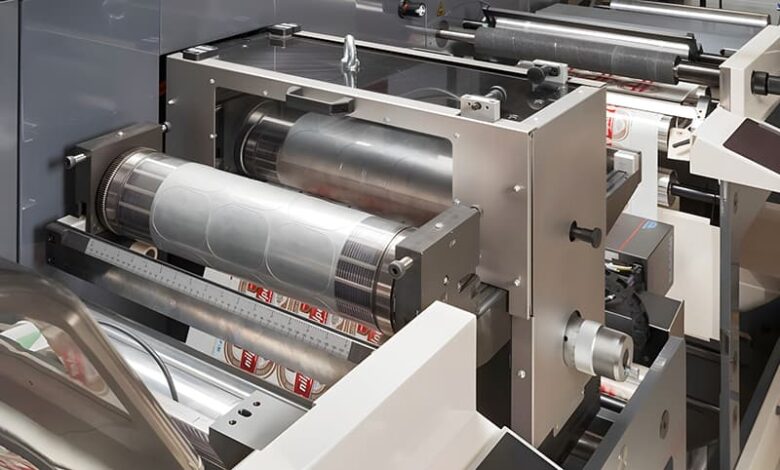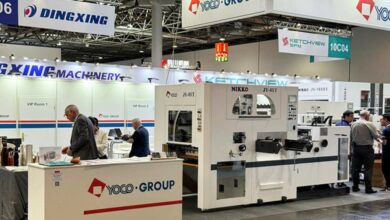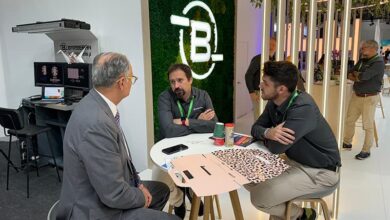
Die-cutting plays a crucial role in shaping and sizing labels, utilizing various methods including traditional mechanical cutting and innovative digital techniques. This process begins with a roll of pressure-sensitive material being unwound and fed through multiple print heads for printing. Additional processes such as foiling, embossing, and varnishing may be applied before the material is die-cut into specific shapes and sizes. The processed web is then slit into individual label reels and rewound, prepared for application.
Mechanical die-cutting utilizes tools like flexible, solid rotary, or flat dies, traditionally crafted from steel. However, advancements have introduced digital laser die-cutting, enhancing precision and versatility. The die-cutting operation, known for its non-chipping shearing process, is pivotal in determining the label’s final application. The process requires meticulous control to ensure the die only cuts through the label material and adhesive without damaging the silicone-coated release liner beneath.
Historically, flat steel dies dominated early label production with intermittent feed and semi-rotary presses during the 1970s and 1980s. As the industry evolved, solid rotary dies became the standard with the rise of rotary printing. More recently, the preference has shifted towards flexible dies, which are now commonly selected over solid tools due to their adaptability and cost-effectiveness.
Tooling materials for dies are specially selected for their toughness, wear resistance, heat resistance, and hardness. These properties are crucial as they determine the die’s durability and performance. The process of hardening these tools may involve techniques such as case hardening, induction hardening, vacuum hardening, or laser hardening, each providing unique benefits to the die’s function and longevity.
Flatbed die-cutting, once the standard, remains useful for specific applications. This method involves a stationary material cut by a pressing die, ideal for short runs and precise adjustments. However, it is generally slower and less robust compared to rotary methods.
Rotary die-cutting, whether using solid or flexible dies, has become the primary method for modern label production due to its efficiency and capability to handle various materials and complex cuts. This method involves a cylindrical die rotating against an anvil to cut shapes, offering faster production speeds and minimal adjustments during operation.
Laser die-cutting represents the cutting edge of this technology, providing the ability to change label shapes on-demand without the need for physical dies. This method uses a laser to cut through the label material precisely, suitable for complex and variable designs, and is particularly beneficial for short-run, high-variability jobs.
Each cutting technology—whether mechanical or laser—has its specific advantages and applications, making it essential for manufacturers to select the appropriate method based on material, production needs, and final application requirements. This tailored approach ensures optimal efficiency, quality, and cost-effectiveness in label production.





